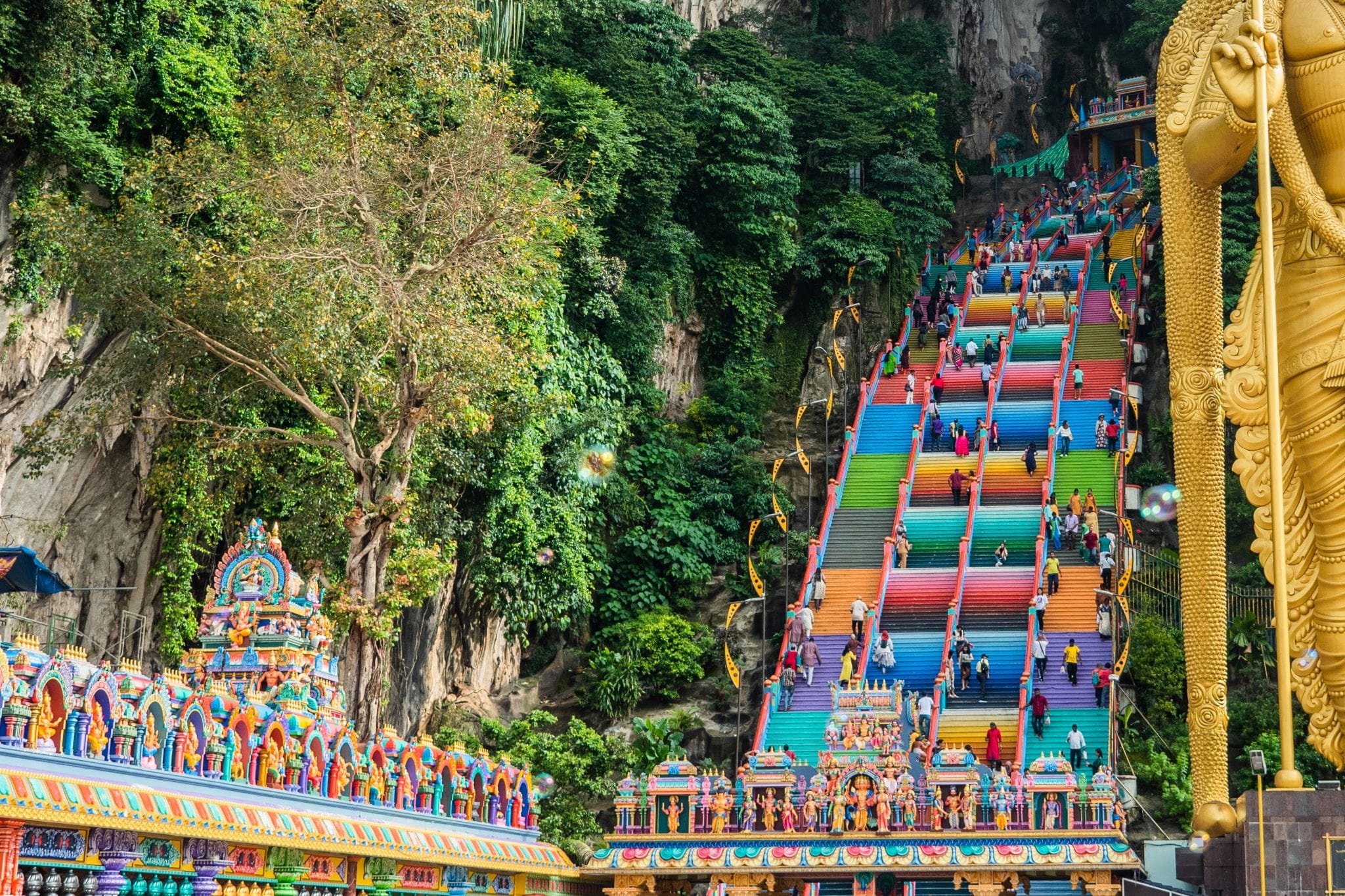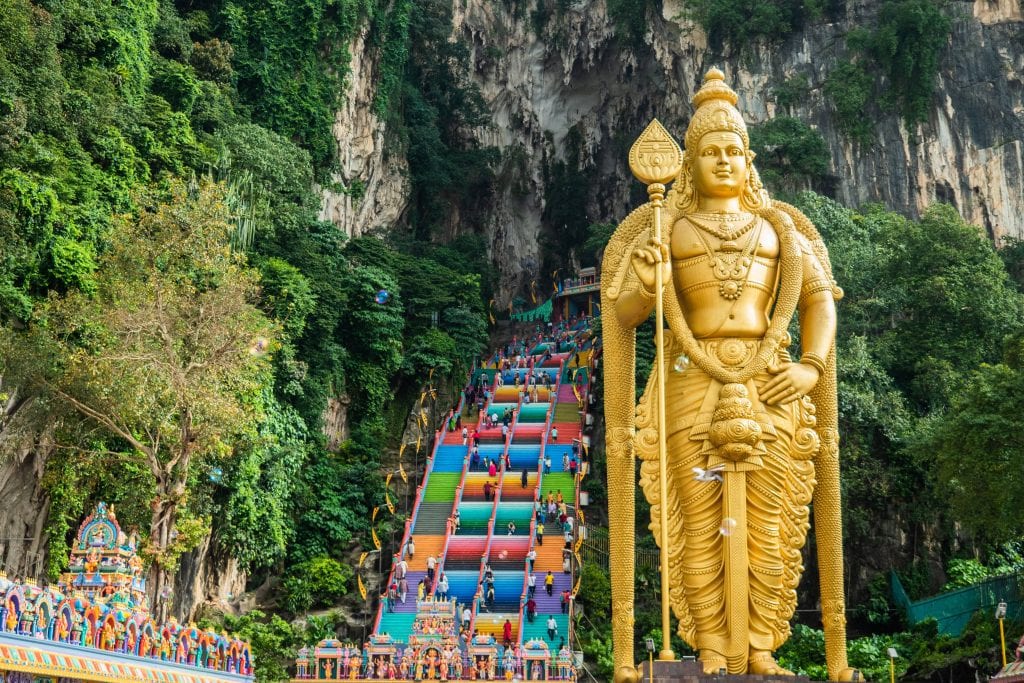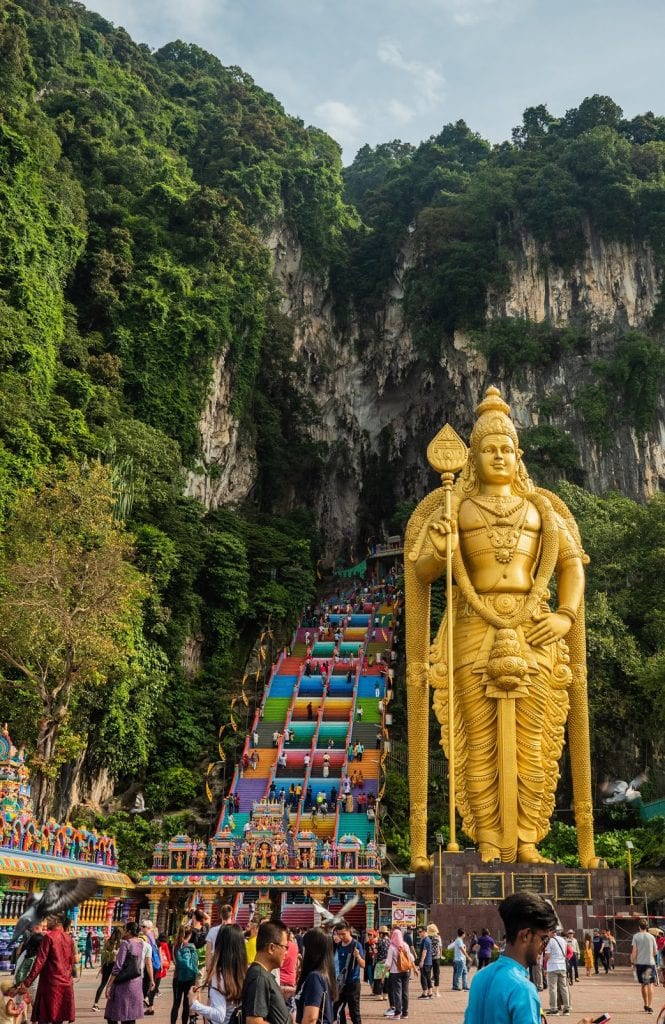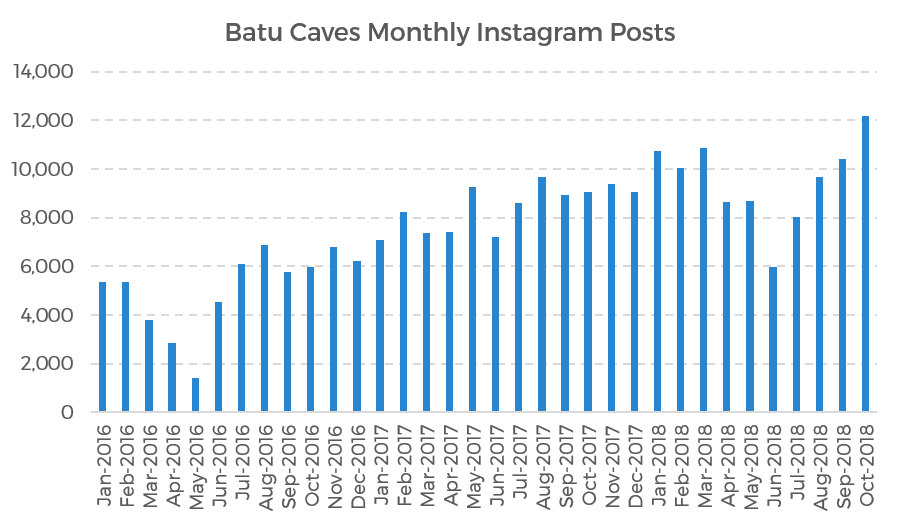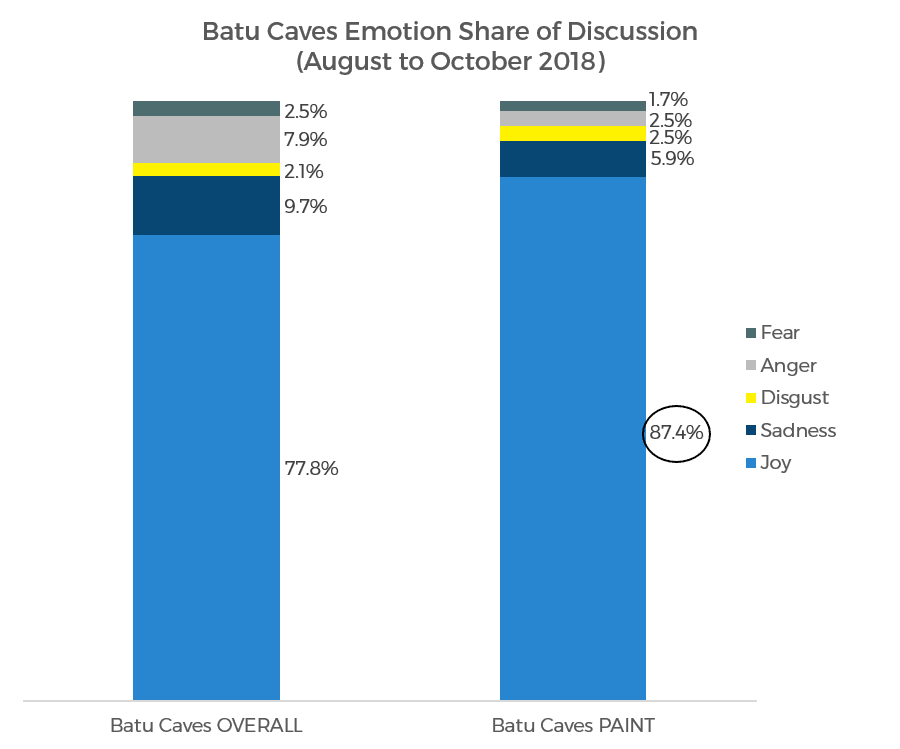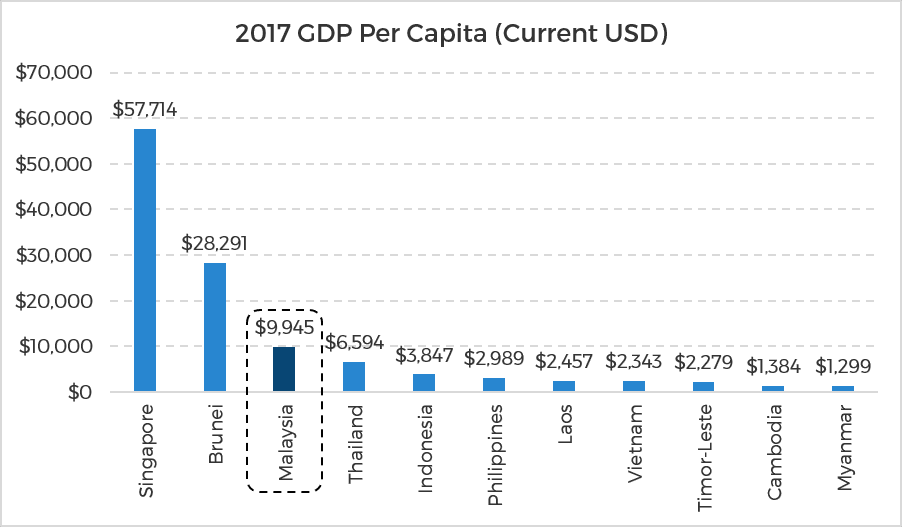Skift Take
The ongoing investigation into the painting of the Batu Caves steps points to a greater need to appropriately preserve heritage sites. Protecting a country’s history and heritage for future generations should come first; increasing the number of Instagram "likes" and "tags" a heritage site gets should come second.
Skift Senior Research Analyst Rebecca Stone is traveling the globe over the next year as part of Remote Year, a program that brings together working professionals to travel, live, and work remotely. She'll spend a month in 12 cities around the world that include Cape Town, Lisbon, Valencia, Sofia, Hanoi, Chiang Mai, Kyoto, Kuala Lumpur, Lima, Medellin, Bogotà, and Mexico City. And every month she'll take you along for part of the journey with a feature about her observations based on firsthand reporting and data about the changing travel industry. She'll do the jet lag. All you have to do is kick back and enjoy her compelling dispatches.
When most people think of Kuala Lumpur, the capital city of Malaysia located in the state of Selangor on the Malay Peninsula, they think of skyscrapers and incredible food from many different cultures — Chinese, Indian, Malay, and more. They typically don’t think of massive caves, native wildlife, and mountainous cliffs jutting out of a tropical jungle.
Thus, my interest was obviously piqued when I found out about Batu Caves, which not only have all of the natural features I just mentioned above, but also have been one of the most popularly visited Hindu shrines outside of India since the late 1800s.
What’s more, Batu Caves, which was inscribed as a Malaysian national heritage site in 2012 (separate from UNESCO’s World Heritage Sites), is currently the center of a controversial, ongoing investigation.
A fresh coat of paint recently applied to the 272 steps leading up to the main cave (“Cathedral Cave” or “Temple Cave”) in August 2018 was not sanctioned by the National Heritage Department (Jabatan Warisan Negara, or ‘JWN’) nor approved by the Selayang Municipal Council (‘MPS’), and, as a result, the site is now potentially in danger of losing its Malaysian heritage status.
However, the caves’ committee chairperson Tan Sri R. Nadarajah has noted to the press that previous requests for approval for other development projects at the site have been essentially ignored by the MPS causing the committee to not think twice about painting the stairs a beautiful array of colors in honor of the peacock. It is true that numerous colors have religious significance in Hinduism after all.
I reached out several times to the Batu Caves temple committee for an interview and did not receive a response.
Nevertheless, and regardless of the outcome, the case of the painted steps at Batu Caves should demonstrate to all destinations how important it is for all parties involved in tourism to better collaborate with each other and remain focused on the key purpose of maintaining heritage sites. Stakeholders have a duty and responsibility to conserve and preserve these important sites, first and foremost, and seeking the financial benefits of increased visitation should come second. Doing what needs to be done to appropriately maintain a center of worship should come first, maintenance for the sake of financial gain should come second (and only when it’s done within the law). Protecting a country’s history and heritage for future generations should come first, increasing the number of “likes” and “tags” a heritage site gets on Instagram should come second.
The Experience of Visiting Batu Caves
While the limestone of Batu Caves is around 400 million years old, accounts of the caves date back to the second half of the 19th century when the location was regularly used by the British for picnics (Keep in mind the British dominated the area until World War II). But after an Indian trader noticed the entrance of the main cave looked like a vel (a divine spear) around 1890, the site was developed into a temple dedicated to Lord Murugan, the Hindu god of war.
The Batu Caves, which consist of three main caves and several shrines, have become the key spot for Hindus to celebrate the Thaipusam festival which commemorates Lord Murugan and occurs in January or February each year. It is said that around 1.5 million people visited the site in February 2017 for the festival, though numbers were much smaller this year (only around 100,000) due to a lunar eclipse. The site also features a Lord Murugan statue, the largest of a Hindu deity in Malaysia and second largest of a Hindu deity in the world, which measures almost 43 meters tall and was installed in early 2006.
Part-nature enthusiast, part-history nerd, I was excited to escape busy “KL” (as Kuala Lumpur is colloquially known), with its twisting, elevated transit lines and towering high-rises, and check out a beautiful, geologically significant place of worship.
However, I was quite taken back when I arrived to a place that looked not that dissimilar from Disney World’s Magic Kingdom — more colorful than an actual rainbow and swarming with people from all over the world. I found myself lightheaded from the intense Malaysian heat combined with the smells of curry, durian, and coconut coming from the food stalls surrounding the main grounds. I walked around trying to capture a decent picture of the incredibly brightly painted stairs leading up to Cathedral Cave without too many people in it, doing my best to avoid stepping on a pigeon.
As my friends and I ascended the stairs, we all became immediately distracted by the numerous monkeys (long-tailed macaques) crawling all over the complex, eating bananas (or the food of visitors) and sometimes making a swipe at a passerby.

A long-tailed macaque eats food from a paper bag clearly meant for humans; Photographer: Jack Hallett
Inside Cathedral Cave, I made a slow rotation gazing up at the beautiful, cavernous ceiling. The music of a ceremony being performed at one of the Hindu shrines flooded the cave. I rejoined my friends who were taking pictures of all of the monkeys hanging out on the cave’s walls. They cooed at the baby monkeys clinging to their mothers and laughed at the overweight ones eating snacks out of plastic packaging obviously intended for humans. Out of nowhere, a man who seemed to work for the temple shot a loud firecracker at the monkeys just a couple feet from where I was standing, causing them to scurry up the walls of the cave and me to lurch for my friend to hide under his backpack. We presumed afterwards it was so that they could continue the ceremony in relative peace. “What even is this place?” I remember thinking to myself. There seemed to be a lot going on.

Long-tailed macaques covered the walls of the caves, somewhat distracting tourists from the overall experience of visiting a place of worship and of geological interest; Photographer: Jack Hallett
Back outside, I commented to a local about how bright and colorful the 272 steps leading up to the cave are. He told me that the stairs had actually been painted only a couple months ago in August, covering up a white-ish, grey color. I asked, “Why did they do that?” thinking about how jam-packed the place was with visitors. “To make it more ‘Insta-worthy,’ I guess,” he laughed in response.

What exactly was the Batu Caves temple committee’s intention when it came to painting the steps?; Photographer: Jack Hallett
Becoming “Insta-Worthy:” Batu Caves is Certainly Generating Buzz
In an effort to assess just how “Insta-worthy” (Slang for when a picture is considered “good enough” to post on Instagram) the Batu Caves have become, we collaborated with Crimson Hexagon, an AI-powered consumer insights company, to perform several analyses assessing the social media attention that Batu Caves has been receiving historically and since the painting of the stairs. The sites or programs monitored included Twitter, Facebook, QQ, Reddit, Tumblr, Instagram, and other blogs and forums, and the search was performed so that the commentary of the post had to include the terms “Batu Caves” or “BatuCaves” or “Batu Cave” or “BatuCave.”
Our analysis showed that there has been a dramatic increase in postings on social media sites and blogs in discussion of Batu Caves. Monthly postings of the heritage site reached an all-time high in September for all sites included in the analysis, and there was a 104 percent increase in postings in third quarter of 2018 versus the third quarter of 2017. Monthly postings on Instagram specifically about Batu Caves also reached an all-time high in October.
Source: Crimson Hexagon, Skift Research
Source: Crimson Hexagon, Skift Research
Source: Crimson Hexagon, Skift Research
In addition, we looked at the types of discussions occurring in the posts. Historically, the most discussed item when it came to Batu Caves online were the long-tailed macaques. Although the monkeys are still the majority, the painted stairs have become the second-most discussed item online at almost 27 percent of the total. This analysis was conducted using posts during August to October for both 2017 and 2018.
Source: Crimson Hexagon, Skift Research
In terms of the sentiment behind the posts, Crimson Hexagon found that the majority of posts regarding the painting of the stairs were joyful or positive, even more so than the overall percentage of posts that were positive on Batu Caves in general. It appears that visitors are enjoying the newly colorful stairs and view them favorably.
Source: Crimson Hexagon
One caveat to this analysis is that it does not distinguish if the increase in posts is simply as a result of more press and news regarding the legality of the painting of the stairs and the investigation. Nevertheless, the sentiment of the posts (mostly positive or joyful), suggests that people are posting more because they are enjoying the brightly painted stairs when they visit the site.
While I’m aware that social media can very much be used for purposes of promoting conservation and protection, we’ve also all seen the lasting ramifications social media can have on destinations by driving increasing numbers of visitors to areas previously untouched and without appropriate infrastructure in place.
If the Batu Caves temple committee was looking to generate buzz about the heritage site, painting the stars has certainly done just that.
What does it mean to be a national heritage site?
According to Section 40 of Malaysia’s Act 645 (the National Heritage Act of 2005), any development of a national heritage site must be approved by and coordinated with the Commissioner of Heritage and the local planning authority.
This means that, once a site has been inscribed as a national heritage site, permission and approval are required from Malaysia’s National Heritage Department and the relevant committee must work with the local council for all renovations and work done to the site. Even painting stairs in the name of maintenance would be included under that law.
I sat down with Muhammad Bakhtiar Wan Chik, deputy minister of tourism, arts, and culture for Malaysia, as well as a couple senior officials of the National Heritage Department, to better understand the balance of preservation versus tourism development.
“They [the Batu Caves temple committee] cannot just simply paint [the stairs],” Bakhtiar stated. “We have no objection if they do it properly … if they do it through proper channels.”
Similar to becoming a UNESCO World Heritage Site, the purpose of being inscribed as a national heritage site in Malaysia is to help raise awareness of the significance of a given site and help pave the way for its protection and preservation.
Designating a site as one of Malaysian national heritage, Bakhtiar explained, is done “for the purpose of conservation, preservation, [and] to protect particular sites. That is number one. We think that tourism [should] come secondarily.” Though many tend to assume that the national heritage mark is primarily a tourism marketing tool, that view “has been kind of misinformed,” Bakhtiar said.
Beneath the surface, Malaysia has more to figure out
After going through an economic growth spurt in the 1990s, when the country’s annual GDP growth rate averaged 8.7 percent during the early- to mid-90s and peaked at 10 percent in 1996, Malaysia is now one of the wealthiest countries in Southeast Asia. It has the third highest GDP per capita in the region as of 2017. Its capital city, Kuala Lumpur, stands as a symbol, tall and proud, of the progress and achievements the country has made.
Source: World Bank
However, in some ways, Malaysia seems to be using Kuala Lumpur’s gorgeous skyscrapers to cover up larger issues. Debt owed to foreign creditors has reached a whopping 70 percent of national income, the country has a dramatically high consumer debt ratio (around 84 percent household debt-to-GDP in the first half of 2018), and corruption remains an issue. The media has called out a broken education system, income inequality, and a need for more investment in R&D to spark innovation. The 1Malaysia Development Bhd (1MDB) financial scandal alone demonstrates we’re talking about some large issues here.
The country’s tourism industry faces challenges as well. While Kuala Lumpur is the sixth-most visited Asian city in Euromonitor International’s Top 100 City Destinations Ranking, WTM London 2017 Edition, tourist arrivals at a national level were actually down 3 percent in 2017, the second lowest after 2015 when arrivals were down over 6 percent following the two Malaysian Airlines tragedies. Year-to-date, arrivals are essentially flat, but on track to reach the country’s target of 26.4 million (revised downward from 33.1 million).
Source: Tourism Malaysia
Perhaps due to other economic and governmental priorities, Malaysia also has one of the smallest budgets dedicated to promoting tourism in the region. The tourism sector was allocated only 110 million Malaysian Ringgit (around $27.5 million) for 2018 as well as for 2019. For reference, Thailand and Indonesia had budgets of $406 million and $225 million, respectively, in 2017. Despite that, the country is still targeting over 28 million arrivals and receipts of over 92 billion Malaysian Ringgit for next year.
“Cultural tourism is something that has been neglected … by previous governments,” Bakhtiar noted. “[But] … tourism contributes about 15% of the GDP … It’s a very key industry to us, and we [have to] make sure that tourism is still there.”
Setting Malaysia’s Priorities Straight
Change seems to be on the way. A completely new government, the Pakatan Harapan coalition, was voted into power during the May 2018 general elections, ending a 61-year rule by the Barisan Nasional coalition. Sentiment regarding the new government is generally optimistic, but the country faces a long road ahead.
Malaysia’s tourism industry does as well. The case of the painted stairs at Batu Caves feels emblematic of larger national issues and cultural norms that point to tourism being less of a focus and collaboration and communication being key issues that need to be addressed. Fortunately, the heritage site, the city, and the country have an opportunity to make it right by starting a new chapter, by being strategic and thoughtful at the same time, and by focusing on how best to maintain their culture and heritage for future generations.
Malaysia is one of the most interesting, complex countries I have ever been to. It is a complete religious melting pot for one — approximately 61 percent of the population is Muslim, 20 percent are Buddhist, nine percent are Christian, and six percent are Hindu. The country is made up of 13 states and three federal territories, all of which have their own local governments and authorities. It also has nine sultans, traditional rulers of their own respective states, one of which is actually elected King every five years.
With so many different governmental agencies at the local, state, and federal level as well as religious organizations, all with their own priorities and focuses, it’s inevitable that there will be competing priorities and even conflicts of interest among various stakeholders. This makes collaboration crucial for sustainable tourism growth.
“We have to somehow collaborate with the state governments, collaborate with the state authorities, collaborate with civil societies … We have to work with a lot of people … but we cannot be working in a silo. Collaboration is key,” Bakhtiar stated.
That collaboration can only come through better understanding that Malaysia is diverse and distinct. It has a cultural heritage and history worth celebrating that visitors want to better learn and understand, which should be preserved for future generations.
“That’s part of tourism and understanding cultures. People come to Malaysia to see Malaysia [because it] is a multi-race, multi-culture society,” Bakhtiar highlighted. “People aren’t just coming for shopping, they want to see historical sites. For me, Batu Caves is part of that attraction.”
“They [the Batu Caves temple committee] have plans to commercialize the area. They want to take advantage of the tourists. … but we would caution them, if you are overdoing it [via overdevelopment], you will lose the attraction — the temple, the natural beauty of the cave, the long steps going up. It’s all part of the ritual. It’s part of their intangible culture, so we must conserve that. Conserve, conserve, conserve.”
However, in somewhat contrast to that statement, Malaysia is also in the process of trying to get four more sites across the country listed as UNESCO world heritage sites. They have targets of 30 million arrivals and 100 billion Ringgit in 2020. While UNESCO certification is a meaningful commitment to preservation, it will also bring more attention, and therefore visitors, to the sites.
“My focus [as Deputy Minister of Tourism, Arts and Culture for Malaysia] is to showcase [our] culture, … That’s why people travel. To see unique culture … you cannot find anywhere else. The food. The different kind of craft.” Bakhtiar explained. “… Arts and culture are the products, so we need to develop these products.”
Yet, the moment those sites are inscribed as world heritage sites, tourists will flock to them. Posts on social media will skyrocket, driving even more visitors. Trying to constantly increase the number of tourist arrivals (albeit at a higher growth rate in receipts as a result of targeting higher quality tourists), just results in more crowds at heritage sites, taking up space in pictures, feeding food to wild animals, being general nuisances in places of religious worship.
I’d caution that if the country doesn’t have proper plans in place for appropriate conservation as well as agreeable, productive communication among the various parties involved with the national heritage sites that they do have, are they prepared for what’s to come?
So rather than setting lofty goals of visitor arrival targets, perhaps Malaysia should prioritize collaboration and preservation. Set up better, more openly communicative partnerships, create a more appropriate tourism promotion budget that better suits the needs of the nation, and implement stronger education initiatives so that locals better understand the religious, historical, and cultural significance of certain sites and how important it is that we preserve these places in their natural state for future generations.
In trying to be the next most “Insta-worthy” destination, perhaps what gets sacrificed is the essence and significance of the site itself, rendering visitors confused about what they’re actually looking at and why.
Conserve and protect, first and foremost.
The Daily Newsletter
Our daily coverage of the global travel industry. Written by editors and analysts from across Skift’s brands.
Have a confidential tip for Skift? Get in touch
Tags: asia, climate change, data and discovery, destinations, skift on the road, skift research, sustainability
Photo credit: The ongoing investigation into the painting of the Batu Caves steps points to a greater need for collaboration in order to appropriately preserve heritage sites for future generations. Jack Hallett
